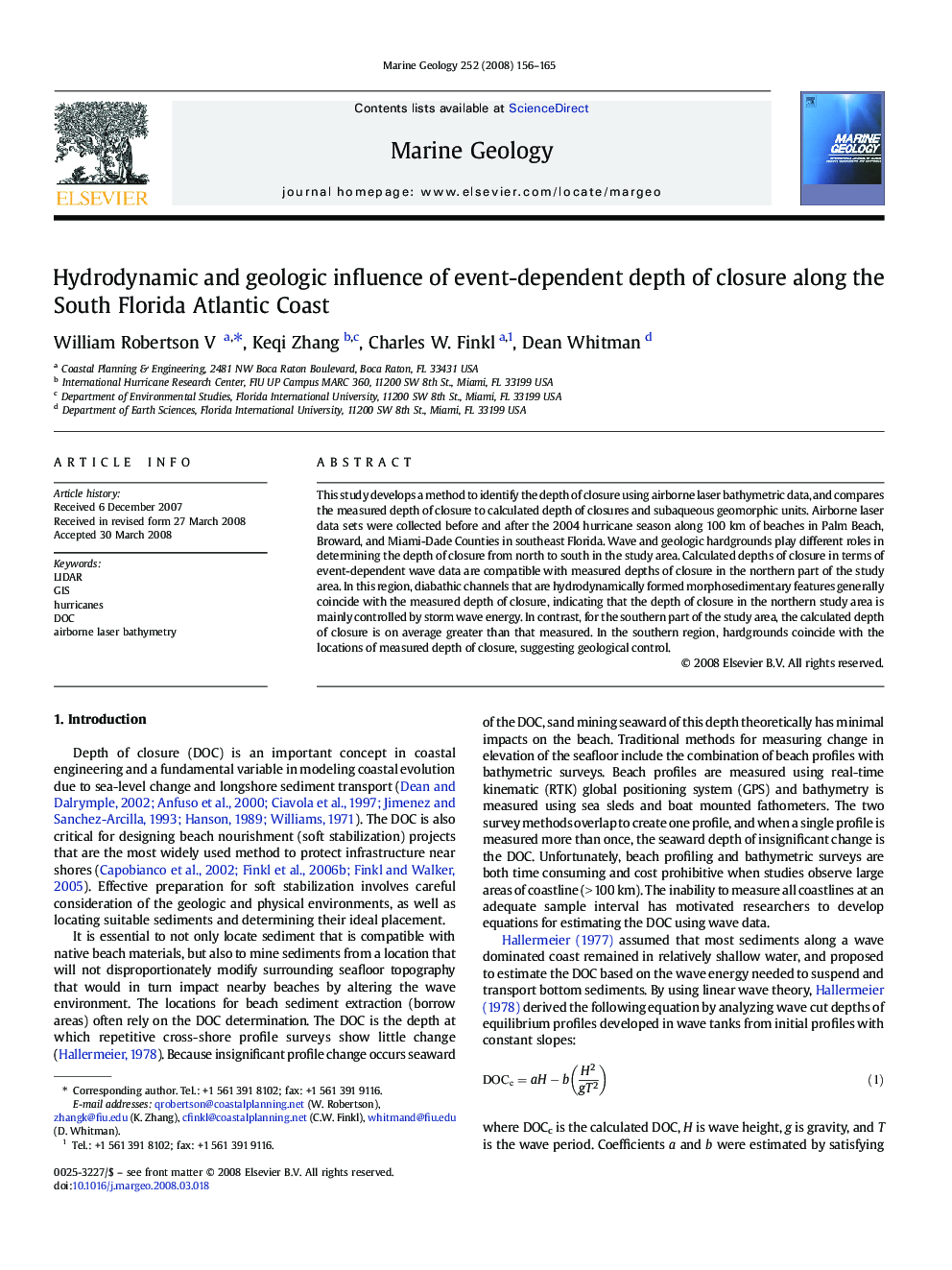| Article ID | Journal | Published Year | Pages | File Type |
|---|---|---|---|---|
| 4719290 | Marine Geology | 2008 | 10 Pages |
This study develops a method to identify the depth of closure using airborne laser bathymetric data, and compares the measured depth of closure to calculated depth of closures and subaqueous geomorphic units. Airborne laser data sets were collected before and after the 2004 hurricane season along 100 km of beaches in Palm Beach, Broward, and Miami-Dade Counties in southeast Florida. Wave and geologic hardgrounds play different roles in determining the depth of closure from north to south in the study area. Calculated depths of closure in terms of event-dependent wave data are compatible with measured depths of closure in the northern part of the study area. In this region, diabathic channels that are hydrodynamically formed morphosedimentary features generally coincide with the measured depth of closure, indicating that the depth of closure in the northern study area is mainly controlled by storm wave energy. In contrast, for the southern part of the study area, the calculated depth of closure is on average greater than that measured. In the southern region, hardgrounds coincide with the locations of measured depth of closure, suggesting geological control.
